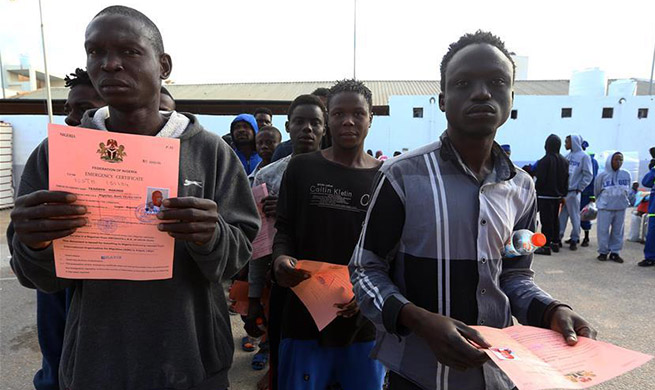GENEVA, Nov. 28 (Xinhua) -- An estimated one in 10 medical products circulating in low- and middle-income countries is either substandard or falsified, which can cause serious illness or even death, the World Health Organization (WHO) warned on Tuesday.
Since 2013, when the WHO launched the Global Surveillance and Monitoring System for substandard and falsified products, the agency has received 1,500 reports of cases of substandard or falsified products, according to the first report from the monitoring system released on Tuesday.
Of these, anti-malarials and antibiotics are the most commonly reported, with most of the reports, or 42 percent, come from sub-Saharan Africa, 21 percent from the Americas, and 21 percent from the European region.
"Many of these products, like antibiotics, are vital for people's survival and wellbeing," says Dr. Mariangela Simao, assistant director-general for drug access, vaccines and pharmaceuticals at WHO.
"Substandard or falsified medicines not only have a tragic impact on individual patients and their families, but also are a threat to antimicrobial resistance, adding to the worrying trend of medicines losing their power to treat," she added.
This means that people are taking medicines that fail to treat or prevent disease, which not only is a waste of money for individuals and health systems that purchase these products, but can cause serious illness or even death, the report concluded.
"Substandard and falsified medicines particularly affect the most vulnerable communities," says WHO Director-General Dr. Tedros Adhanom Ghebreyesus. "This is unacceptable. Countries have agreed on measures at the global level -- it is time to translate them into tangible action."
Along with Tuesday's report. WHO also published research that estimates a 10.5 percent failure rate in all medical products used in low- and middle-income countries. This study was based on more than 100 published research papers on medicine quality surveys done in 88 low- and middle-income countries involving 48,000 samples of medicines.
However, lack of accurate data means that these estimates are just an indication of the scale of the problem, and that more research is needed to more accurately estimate the threat posed by substandard and falsified medical products.
Even based on 10 percent estimates of substandard and falsified medicines, a modelling exercise developed by the University of Edinburgh estimates that 72,000 to 169,000 children may be dying each year from pneumonia due to substandard and falsified antibiotics.
A second model done by the London School of Hygiene and Tropical Medicine estimates that 116,000 additional deaths from malaria could be caused every year by substandard and falsified anti-malarials in sub-Saharan Africa, costing 38.5 million U.S. dollars from patients and health providers for further care due to failure of treatment.
"The bottom line is that this is a global problem," says Dr. Simao. "Countries need to assess the extent of the problem at home, and cooperate regionally and globally to prevent the traffic of these products and improve detection and response."

















